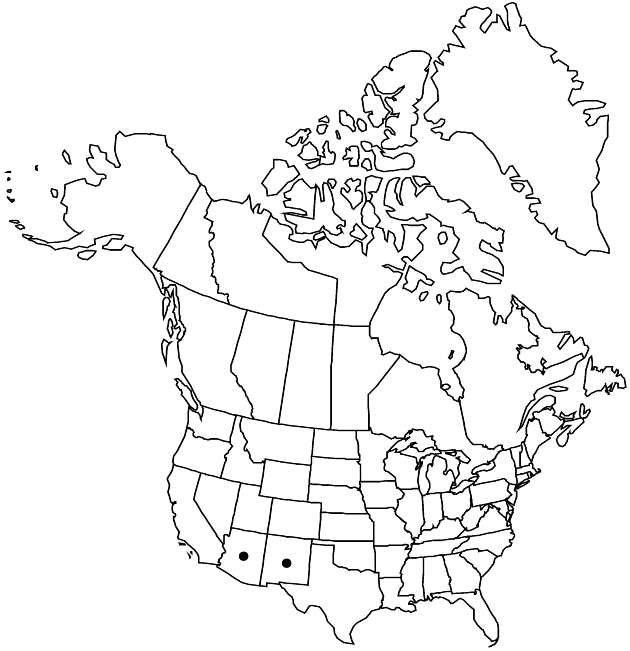Difference between revisions of "Agoseris heterophylla var. quentinii"
Sida 21: 271. 2004.
Common names: Arizona agoseris
FNA>Volume Importer |
imported>Volume Importer |
||
| (6 intermediate revisions by 2 users not shown) | |||
| Line 24: | Line 24: | ||
|elevation=1200–2000 m | |elevation=1200–2000 m | ||
|distribution=Ariz.;N.Mex. | |distribution=Ariz.;N.Mex. | ||
| − | |discussion=<p>The relatively small corollas and anthers of var. quentinii suggest that it, too, may be autogamous, as is var. heterophylla.</p> | + | |discussion=<p>The relatively small corollas and anthers of <i></i>var.<i> quentinii</i> suggest that it, too, may be autogamous, as is <i></i>var.<i> heterophylla</i>.</p> |
|tables= | |tables= | ||
|references= | |references= | ||
| Line 33: | Line 33: | ||
-->{{#Taxon: | -->{{#Taxon: | ||
name=Agoseris heterophylla var. quentinii | name=Agoseris heterophylla var. quentinii | ||
| − | |||
|authority=G. I. Baird | |authority=G. I. Baird | ||
|rank=variety | |rank=variety | ||
| Line 48: | Line 47: | ||
|publication year=2004 | |publication year=2004 | ||
|special status= | |special status= | ||
| − | |source xml=https:// | + | |source xml=https://bitbucket.org/aafc-mbb/fna-data-curation/src/2e0870ddd59836b60bcf96646a41e87ea5a5943a/coarse_grained_fna_xml/V19-20-21/V19_514.xml |
|tribe=Asteraceae tribe Cichorieae | |tribe=Asteraceae tribe Cichorieae | ||
|genus=Agoseris | |genus=Agoseris | ||
Latest revision as of 19:52, 5 November 2020
Stems 0. Leaves spreading to prostrate; blades 2–12 cm × 3–9(–12) mm, mostly lobed, lobes 2–3 pairs, abaxially glabrous, adaxially pubescent. Peduncles 0–26 cm, lengths mostly less than 0.5 times leaves at flowering, 0.5–3 times leaves in fruit, ± glabrate, or apically tomentose. Florets 15–30+; corollas ± equaling phyllaries at flowering, tubes 2–3 mm, ligules 2–3 × 0.8–1.5 mm; anthers ca. 1 mm.
Phenology: Flowering Mar–Jun.
Habitat: Mesic to dry habitats in deserts, grasslands, and oak woodlands
Elevation: 1200–2000 m
Discussion
The relatively small corollas and anthers of var. quentinii suggest that it, too, may be autogamous, as is var. heterophylla.
Selected References
None.
Lower Taxa
None.
